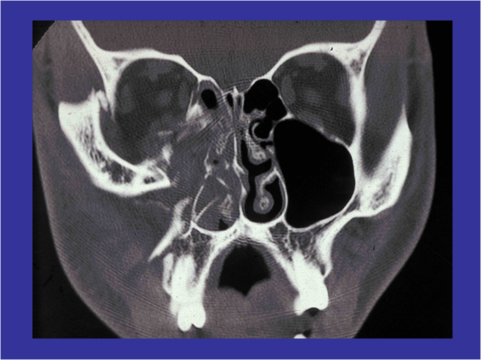
This is a Computerized Tomographic (CT) image of a patient with a fractured cheek bone. As a craniofacial surgeon at a major medical center, I have treated hundreds of these injuries. Facial fractures may result from any significant blunt trauma -- motor vehicle accidents, physical altercations, sports injuries. Facial fractures may be isolated injuries, but are often associated with more significant head, torso and extremity injuries. It all depends on the mechanism of injury.
In the last year I have witnessed a new injury demographic, amounting to almost an epidemic: bicyclists over the age of 50. Whereas I used to treat older patients with bicycle accident injuries once or twice a year, just last week I evaluated three!
Young and old are encouraged to ride bikes in Boston. Mass.gov recommends biking as an alternative commute option that saves the public money on gas and helps promote a healthy lifestyle.
According to the City of Boston website, bicycle ridership increased by 122 percent from 2007 to 2009. Bike lanes have been instituted on two of the city's major streets, Massachusetts and Commonwealth Avenues, now the two city streets with the highest incidents of bike accidents. Bike accidents on busy streets are predictable since bicycles provide no protection to the rider and poor maneuverability. My daily observation tells me that bicyclists (young and old) while slowing motor vehicle traffic on Commonwealth Avenue rarely stop for red lights or stop signs, frequently ride outside of the bike lane and often ride on the wrong side of the street.
People over 50 have slower reflexes, less strength, less coordination, less aerobic capacity and lower bone density. (See "Exercise and Aging: Can You Walk Away from Father Time?" in the December 2005 issue of the Harvard Men's Health Watch. For more information or to order, please go to www.health.harvard.edu/mens.)
These unfortunate realities make older riders less likely to avoid a bike accident -- and if they have one, it's more likely to be severe. Presumed superior intelligence, good judgment and decision making are not protective from bike accidents and injury. U.S. Supreme Court Justice Stephen Breyer (born in 1938) suffered a broken collarbone in a bike accident while riding near his home in Cambridge this summer. In 1993, he suffered a punctured lung and broken ribs when he was hit by a car while cycling across Harvard Square.
While being dangerous, city bike riding also has a limited exercise benefit. If you weigh 150 lbs and walk two miles to work at four miles/hour you will burn 150 calories. If you ride your bike that distance at 10 miles/hour, you will only burn 75 calories.
If you are over 50, think twice before you get on a bicycle, especially if you plan on riding in busy traffic. The benefits just don't outweigh the potential consequences.